16 Key Mobile App UI/UX Design Trends
- Updated: Mar 17, 2025
- 10 min
Designing a mobile app with a seamless and engaging user experience (UX) and a visually appealing user interface (UI) is essential for any successful project.
It has become more critical than ever in 2025, as millions of apps compete to stand out in the market.
This article explores the top 16 mobile app UI/UX trends that are gaining traction and shaping the future of mobile app design.
Curious about where app development is headed? Our application development trends guide has the answers.
Transform your mobile app with our expert UI/UX design services tailored to your unique needs — contact us today to get started!
Key Mobile App UI/UX Design Statistics for 2025
- Every $1 invested in user experience (UX) returns $100, equating to a return on investment (ROI) of 9,900%.
- 39% of users will stop engaging with content if loading takes too long.
- 88% of users are less likely to return to a website after a bad user experience.
- Mobile users are 5 times more likely to abandon a task if the site isn’t mobile-optimized.
- JobNimbus increased its app ratings from 2.5 to 4.8 after redesigning their app and using UXCam data. Is your app in need of a refresh? Discover how to redesign an app for better performance and aesthetics.
- Recora reduced support tickets by 142% using session replay to identify user experience issues.
1. Minimalist Design
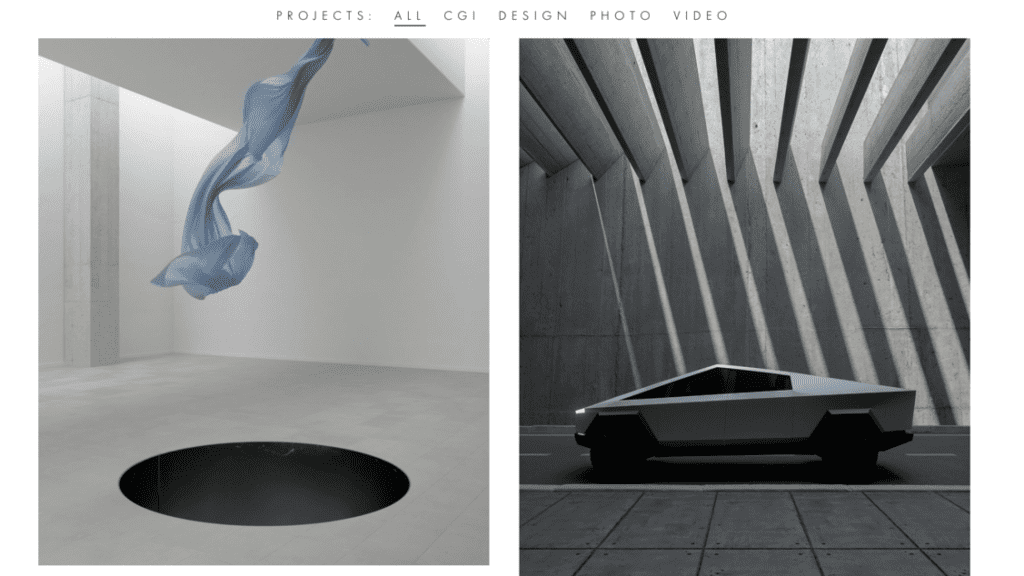
The world of mobile app UI/UX design trends is currently dominated by minimalist design.
This design philosophy is all about simplicity and a user-centric approach, emphasizing clean lines, monochromatic color schemes, and the removal of superfluous visual elements.
According to a study by Google, users assess website designs in as little as 50 milliseconds, with simpler designs being rated as more visually appealing.
The minimalist design helps reduce cognitive load, making it easier for users to navigate apps more intuitively.
For instance, Spotify uses a minimalist design by employing a straightforward layout and intuitive controls, which has contributed to its high user engagement rates. With over 365 million active users monthly, Spotify’s minimalist approach seems to have paid off.
Minimalist design isn’t just a stylistic choice but rather a strategic approach to improving user satisfaction and retention rates.
2. Increased Personalization
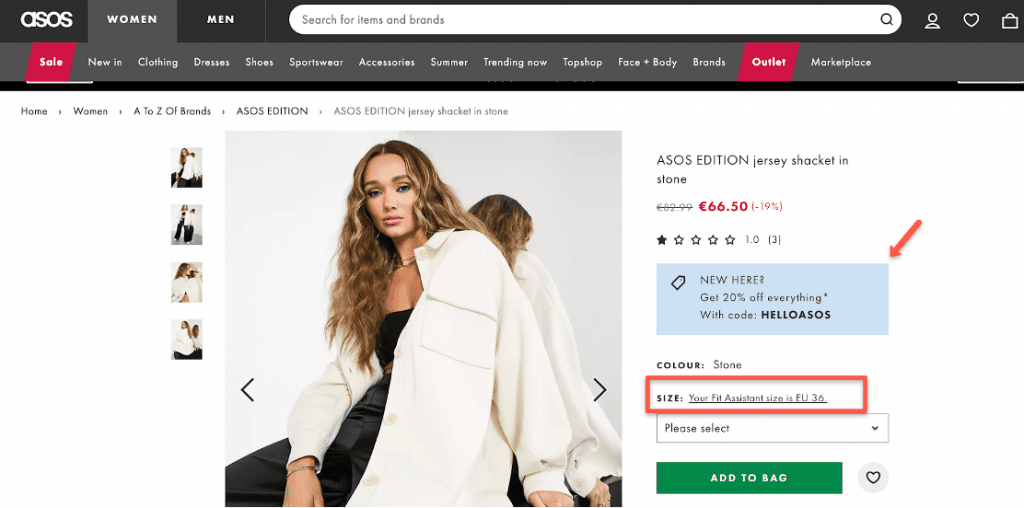
Customization has become an integral part of modern mobile app design, thanks to advanced data analytics and machine learning technologies.
According to a report by Epsilon, 80% of consumers are more likely to make a purchase from a brand that offers personalized experiences.
Mobile apps are increasingly using user data to provide tailored content, recommendations, and interfaces.
For instance, Netflix uses advanced algorithms to analyze viewing patterns and preferences, which results in highly personalized content recommendations. This approach has led to significant user engagement, with Netflix boasting an impressive viewer retention rate of 93%.
Personalization goes beyond content to encompass personalized notifications, app functionalities, and even personalized app aesthetics.
As data analytics and virtual reality technologies continue to evolve, app personalization is expected to grow in scope and accuracy, further enhancing seamless user experiences.
The streaming market is booming. Discover how to start a streaming service like Netflix and claim your space.
3. Passwordless Login
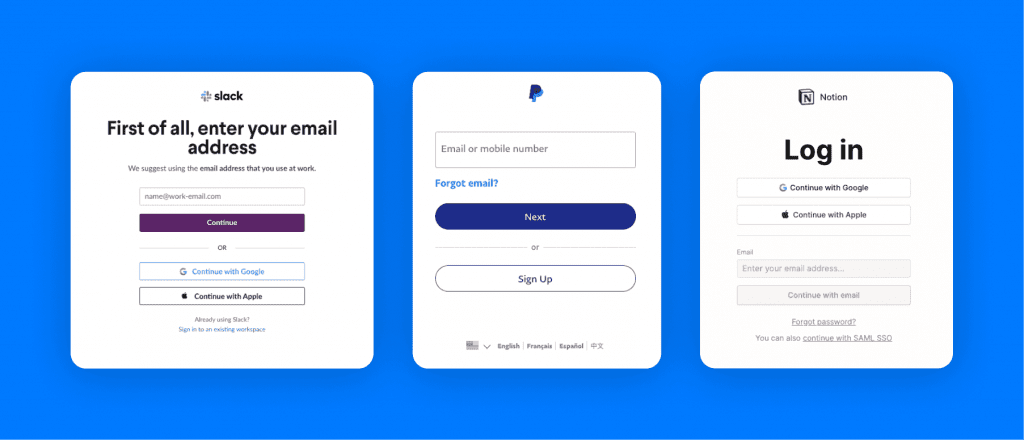
The shift towards passwordless login methods is gaining momentum in the US, driven by the need for enhanced security and a smoother user experience.
Passwordless authentication methods, such as biometrics, one-time tokens, and magic links, offer a more secure and user-friendly alternative to traditional passwords.
According to Microsoft, over 150 million people in the US are using passwordless sign-in methods each month.
This trend is not only about convenience; it addresses the significant security vulnerabilities associated with password-based authentication.
The Verizon Data Breach Investigations Report highlights that 86% of hacking-related breaches involve weak or stolen passwords.
Popular apps like WhatsApp and banking applications are leading the way in adopting passwordless login, significantly reducing the risk of phishing attacks and unauthorized access.
As technology advances, passwordless login is set to become the standard, offering a seamless and secure authentication experience for users.
4. Augmented Reality (AR)
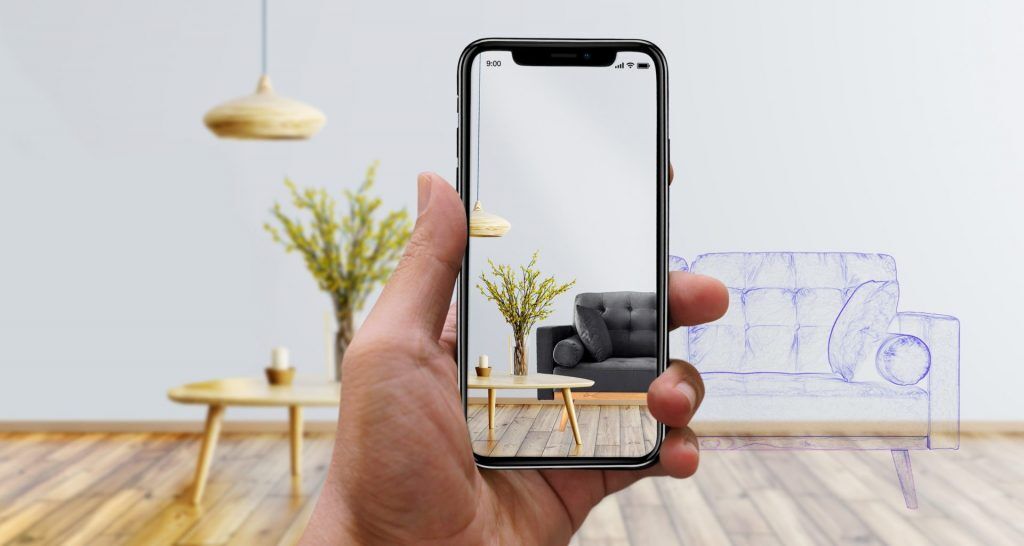
By blending digital content with the real world, AR transforms user experiences like never before.
In fact, the global AR market is expected to reach a whopping $58.1 billion by 2028, according to Statista.
Popular mobile apps such as IKEA Place and Pokémon GO have already demonstrated the power of AR to engage users in unique and innovative ways.
For instance, IKEA Place lets users visualize furniture in their own space before purchasing, leading to a more informed buying decision and a higher level of customer satisfaction.
Meanwhile, Pokémon GO’s massive success with over 1 billion downloads worldwide highlights the potential of AR in gaming and beyond.
As augmented reality technology develops further, it is expected to redefine user interactions and offer immersive experiences that were previously unimaginable. Check out the latest AR statistics to see its impact.
Explore our SaaS services today
5. Illustrations Over Photos
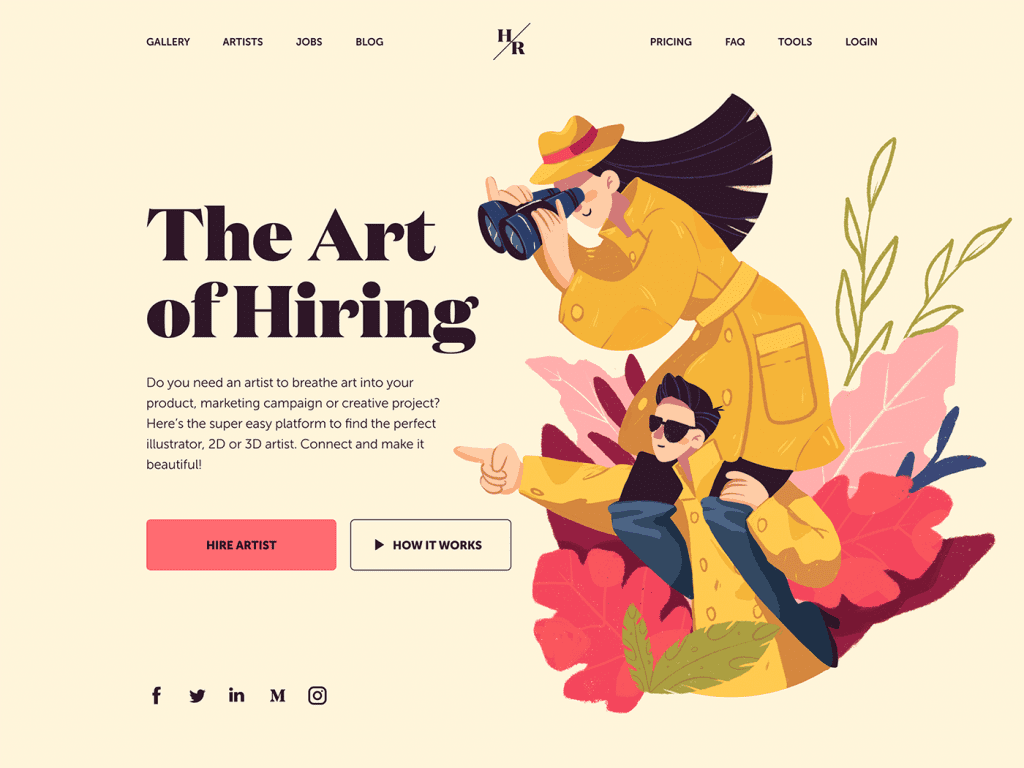
Illustrations in mobile app design are becoming increasingly popular due to their ability to foster creativity, reinforce brand identity, and improve user engagement.
Unlike photos, illustrations can be customized to match an app’s color scheme, style, and message, creating a unique visual experience that stands out in a crowded app market.
Dropbox is a notable example; by incorporating playful illustrations into its design, it differentiated itself and added a friendly, approachable vibe to its brand.
This approach has contributed to its user base growth, with Dropbox’s 700 million registered users.
Research from Nielsen Norman’s suggests that personalized and contextually relevant illustrations can significantly enhance user engagement and understanding, indicating that this trend will continue to evolve as apps strive to create more emotionally resonant user experiences.
6. Flat Design
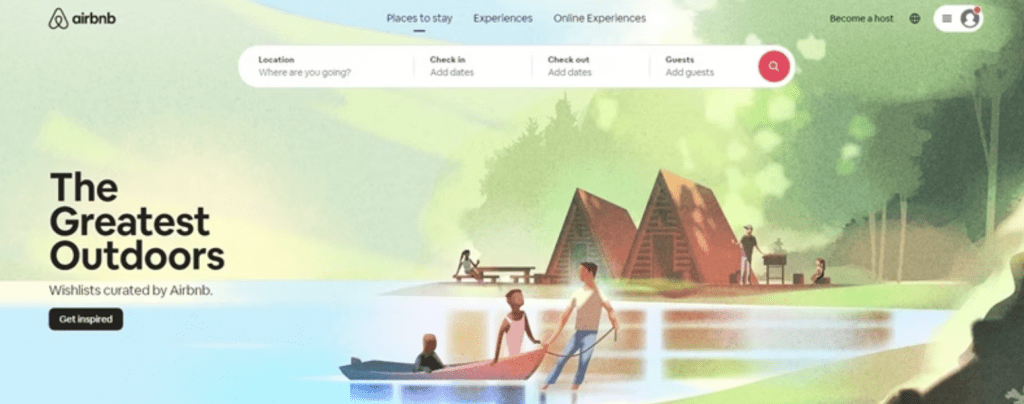
Flat design is still a popular trend in mobile app UI/UX. This design style is characterized by its minimalist approach, bold colors, and emphasis on simplicity and functionality.
Instead of using realistic textures and skeuomorphism, the flat design utilizes a more stylized, geometric approach to visuals.
Google’s Material Design is a great example of flat design principles in action. It combines clean, open space, grid-based layouts, and responsive animations to create intuitive and visually appealing digital experiences.
Adopting flat design has been shown to improve usability by streamlining user interfaces and reducing loading times.
A case study on flat design’s impact on app performance revealed a 30% increase in user engagement rates post-implementation.
7. Bottom Navigation
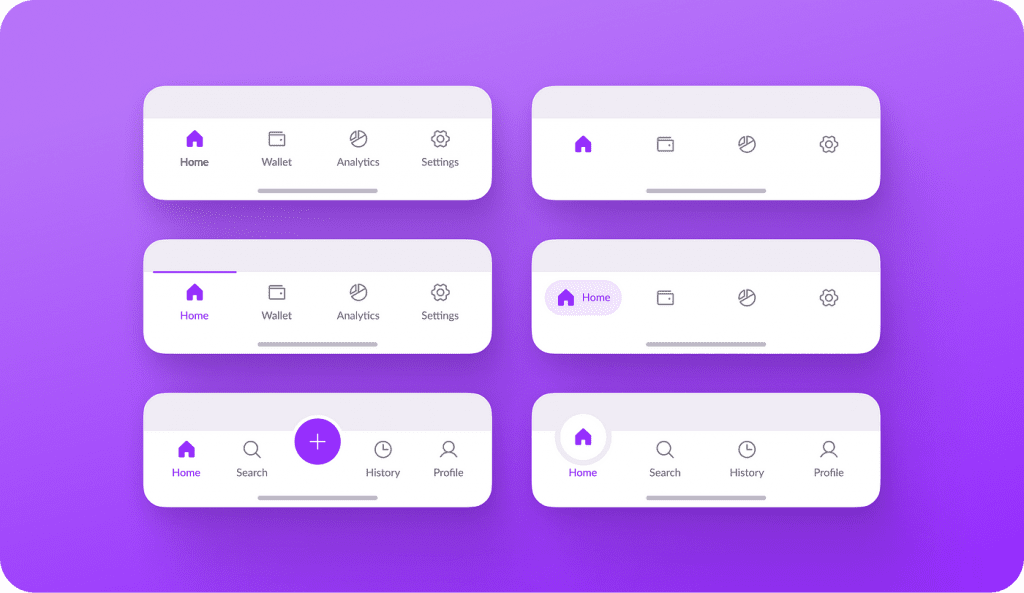
Bottom navigation bars have been gaining popularity in mobile app design, especially for apps with complex navigation structures.
This trend is fueled by the rise of large-screen smartphones, which often require two hands to reach the top of the screen.
By placing key navigation elements within easy reach, bottom navigation enhances the user experience and facilitates smoother app interactions.
According to a study by UX Movement, apps with bottom navigation have seen a significant increase in user engagement, with users finding it 21% faster to navigate compared to traditional top navigation menus.
Popular apps like Instagram and Spotify utilize bottom navigation to improve usability, contributing to their high levels of user engagement and satisfaction.
As screen sizes continue to grow, bottom navigation is expected to become an even more critical element of mobile app design, emphasizing the importance of accessible and efficient user interfaces.
Ready to build the next big social platform? Learn how to create an app like Instagram.
8. Dark Mode UI

Dark mode is becoming a more common feature in mobile apps. It offers users an alternative to bright, light backgrounds and can reduce glare and eye strain in low-light conditions.
According to a report by the American Optometric Association, this feature provides potential health benefits.
Additionally, dark mode can contribute to battery savings on OLED and AMOLED screens.
Apps such as Twitter and Reddit have reported increased user engagement after introducing dark mode. Users appreciate the option to customize their viewing experience based on their preferences and environment.
As digital wellness becomes more important, the adoption of dark mode is expected to continue to grow, becoming a fundamental consideration for future mobile app development.
9. Focus on Accessibility
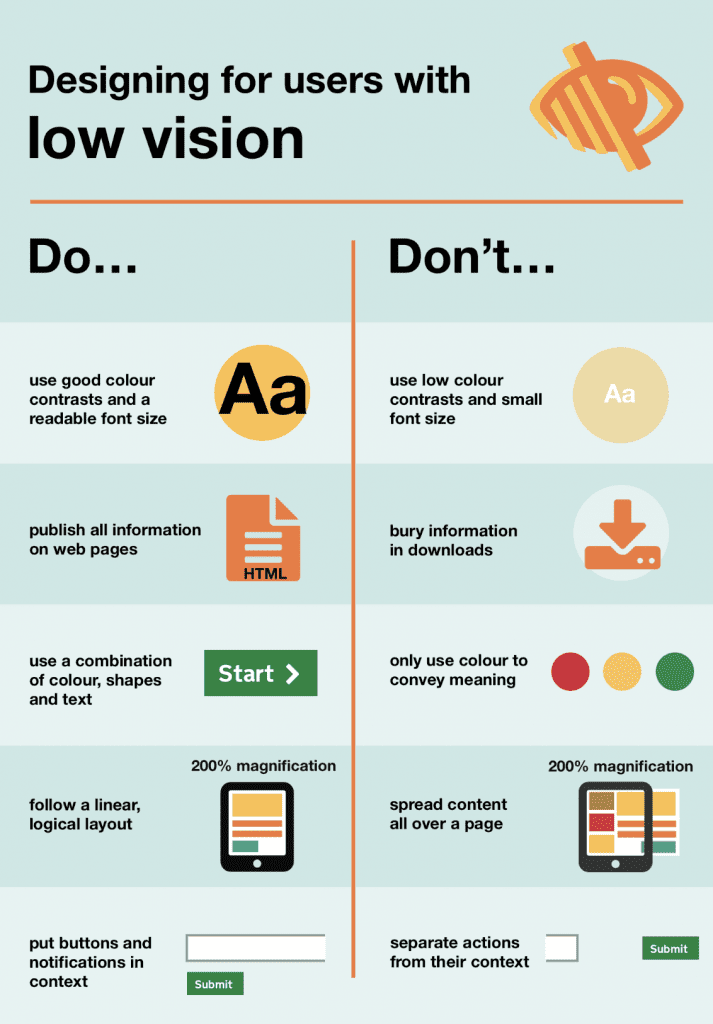
Mobile app accessibility has become a must-have rather than a nice-to-have feature, as developers realize the importance of creating apps that are user-friendly for everyone, including people with disabilities.
According to the World Health Organization, over 1 billion people live with a form of disability, which emphasizes the significance of accessible design.
Standard mobile app features such as voice navigation and adjustable text sizes are becoming increasingly popular, driven by ethical and legal considerations.
For instance, introducing VoiceOver compatibility in apps like Apple News has opened up content to visually impaired users, making their experience more enjoyable.
A Forrester Research study showed that designing for accessibility can increase market reach by up to 15%.
As the awareness and regulations around digital accessibility continue to evolve, investing in accessible design is not just a moral obligation but also a competitive edge.
10. Increased Transparency
With the increasing concern around data privacy and security, transparency in mobile app operations has become a crucial factor in building trust with users, especially concerning data usage and permissions.
Regulations like the General Data Protection Regulation (GDPR) in Europe and the California Consumer Privacy Act (CCPA) have set new standards for data transparency and user consent.
Mobile applications that clearly comGoogle’s the collection and usage of data while providing users with control over their information see higher engagement and trust levels.
According to a survey conducted by Cisco, 84% of consumers trust companies with robust privacy policies.
Transparency is not only about legal compliance but also about nurturing a relationship of trust.
11. Bold Typography
Big, eye-catching fonts are proving to be a game-changer in mobile app design.
They help grab users’ attention, convey messages in a clear and concise way, and establish a unique brand identity that sticks in the mind.
Bold typography is especially useful on smaller screens, making it easy for users to navigate and read even the tiniest of text.
A recent study by Smashing Magazine showed that apps using bolder fonts saw a significant increase in user engagement, up to 10%, as it helps highlight important content and guide users through the app’s interface.
Companies such as Airbnb and Medium have successfully integrated bold typography into their apps to not only improve usability but also create a strong visual brand presence.
As UX designers continue to balance aesthetics with functionality, bold typography is becoming an increasingly important element in creating engaging and effective mobile app interfaces.
Explore our UX&UI design services
12. Fluid Layouts

Mobile app design process is evolving and becoming more fluid, to cater to the diverse range of device sizes and screen resolutions.
Fluid layouts use responsive design principles to ensure that app interfaces look and function seamlessly across all devices, enhancing the user experience.
This approach involves creating flexible grids and layouts that adjust to the user’s device, improving accessibility and usability.
Google’s Mobile-First Indexing initiative, which prioritizes mobile-friendly websites in search results, highlights the importance of responsive design.
Adobe’s research indicates that responsive design can increase cross-platform consistency, leading to a 20% uplift in engagement.
As the market continues to fragment with new device sizes, fluid layouts are essential for developers to reach the widest possible audience without compromising on user experience.
13. Card-Based Design
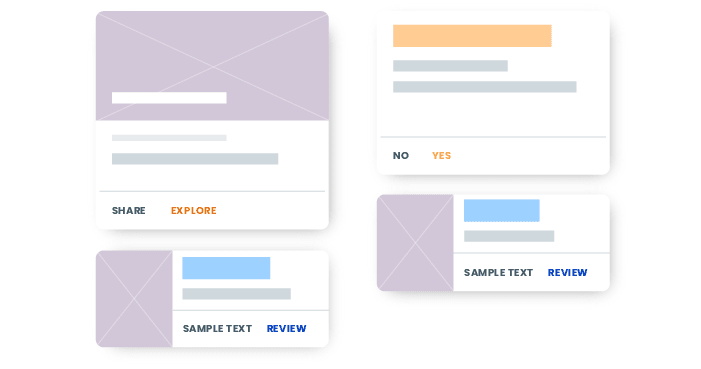
The card-based design has become a popular trend in mobile app UI/UX, offering a visually appealing and organized way to present information.
Cards divide content into manageable chunks, making it easier for users to digest information and interact with apps.
This design trend is particularly effective for apps with rich content offerings, like news aggregators and social media platforms.
Pinterest, for example, uses a card-based design to display a vast array of content in an organized, easily navigable manner, contributing to its high user engagement rates.
According to Nielsen Norman Group’s research, card-based design enhances usability by simplifying complex information.
As content consumption on mobile devices continues to grow, card-based design is expected to remain a key trend in creating efficient, user-friendly app interfaces.
14. Conversational User Interfaces
Conversational and voice User Interfaces (UIs), such as chatbots and voice assistants, are changing the game for mobile apps by providing more user-friendly, natural language-based interfaces.
The demand for personalized interfaces is growing, with the global chatbot market expected to reach $9.4 billion by 2025, according to Grand View Research.
These emerging technologies use natural language processing (NLP) and machine learning algorithms to offer personalized, context-aware interactions, greatly improving user engagement and satisfaction.
For example, the Starbucks Barista app enables customers to order using voice or text in a conversational manner, streamlining the ordering process and enhancing customer experience.
A study by Capgemini found that 70% of consumers increasingly prefer interacting with conversational assistants for faster interactions.
As AI-powered tools continue to advance, conversational UIs are likely to become even more advanced, providing richer and more human-like interactions.
15. Improved Onboarding
Having an effective onboarding process is crucial in mobile app design, as it has a significant impact on user retention rates.
A well-designed onboarding experience helps users understand the key features and functionalities of the app, making it easier for them to start using it regularly.
According to a report by Localytics, apps with strong onboarding processes can improve user retention by up to 50%.
Take Duolingo, it offers a simple but engaging setup process that showcases the app’s value from the outset. By personalizing the learning experience, Duolingo achieves higher engagement and retention rates.
Given that users often decide whether to stick with an app within the first few minutes of use, it’s essential for developers to invest in an intuitive and informative onboarding design process to build lasting relationships with their audience.
16. Visual Search
Using images instead of text to find information is possible with visual search technology.
This approach is more intuitive and efficient, making it easier for users to find what they’re looking for.
According to Data Bridge Market Research, the visual search market is expected to surpass $32 billion by 2028.
In retail and commerce apps, visual search technology can significantly enhance the shopping experience.
For example, Pinterest’s Lens feature allows users to search for Adobe products and ideas using photos from their camera or photo gallery, which drives higher engagement and conversion rates.
A study by Slyce indicated that visual search could increase e-commerce revenue by up to 30%, making it a valuable tool for streamlining the product discovery process.
As camera and image recognition technologies continue to improve, visual search is poised to become a key component of mobile app UI/UX.
This technology offers users a faster, more natural way to interact with digital content.
Looking to launch an eCommerce business? Check out these eCommerce startup ideas for fresh inspiration.
Conclusion
When it comes to designing mobile app UI/UX, the current UX trends clearly focus on creating personalized user experiences that are more intuitive and engaging.
With rising user expectations, UX designers are challenged to deliver visually appealing apps that are also easy to use and tailored to individual needs.
Looking ahead, there’s enormous potential for creating impactful and memorable app experiences as long as UX designers keep the user’s needs at the heart of their work.
From AI to blockchain, explore the most impactful IT trends of the year.
Want inspiration for your website? Check out these examples of good web design for ideas.













